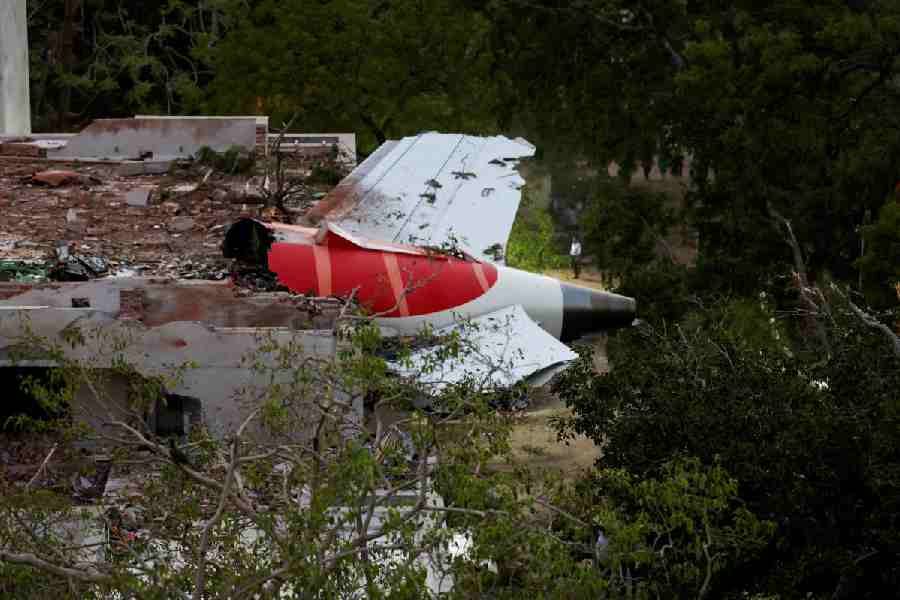 |
| A Bengal Florican at Kokilabari agricultural farm. Picture by Kaushik Deuti |
Guwahati, July 2: The sighting and breeding of at least 20 Bengal Floricans, a critically endangered avian species, outside the protected area network of Manas National Park has brought cheer to wildlife lovers.
The floricans were recently sighted at Kokilabari agricultural farm, a joint venture of the Centre and state government, during a recent survey conducted by Manas authorities in collaboration with non-government organisations.
The forest department decided to conduct the survey by identifying male territories of the Bengal Floricans. The survey technique concentrated on the males as they have a prominent aerial display. Females are more easily overlooked, so their numbers were estimated, assuming one female for every male.
The deputy director of Manas tiger reserve, Sonali Ghosh, told The Telegraph that the sighting was the highlight of the survey. “It also highlights the need to protect sites such as Kokilabari agricultural farm for long-term conservation of the species,” she said, adding that there were now about 60 Bengal Floricans in and around Manas.
Namita Brahma, who has been working on conservation of Bengal Floricans for many years and was a part of the survey, said, “This is the only place outside the protected area network throughout the country where such a good breeding population has been found. This is good news.”
Houbaropsis Bengalensis or the Bengal Florican belongs to the Otididae family, popularly known as Bustard family. The breeding season of the species starts from February and lasts till early July. Fewer than 500 birds are estimated to remain in the Indian subcontinent.
The farm, spread over nine square kilometres, is situated on the eastern boundary of Bhuyanpara range of Manas. The land for the farm was taken on lease from the forest department for 30 years. At that time the farm supported people from 57 villages for their livelihood. The lease expired in 2001 but not extended because of the prevailing civil unrest in the area and the farm was abandoned. However, local villagers carried out cultivation in the farm on a co-operative basis with support from BTC.
The suitability of the farm for Bengal Floricans was evident as early as 2003 when conservation agencies started working in the area and sightings were reported on a regular basis. With greater awareness and social intervention, villagers started rescuing eggs of Bengal Florican and hunting declined. “It is, therefore, suggested that this unique feat by local villagers to afford protection be recognised and formalised through declaration of a community reserve. New initiatives are required in terms of the ban on use in pesticides and burning especially during the breeding month,” Ghosh said. The official said the survey clearly indicates the success of the method wherein the collaboration between forest frontline staff, experts and local guides was instrumental in obtaining a quick result.
“It is good that floricans are there in good numbers in a small area. Positive steps need to be taken in future for its proper conservation as it is critically endangered,” said Anwaruddin Choudhury, a senior bureaucrat who had initiated steps for conservation of the bird when he was the deputy commissioner of Baksa during 2004-07.










